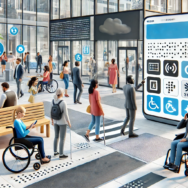Building Products with Accessibility in Mind: Why It Matters for Everyone, including PMs
Accessibility in product design ensures everyone, regardless of ability, can use and enjoy what we create as product managers. As technology becomes a larger part of daily life, it’s more important than ever for product teams to focus on accessibility. This isn’t just about doing the “right thing” but also designing products that more people can use, appreciate, and benefit from. Here’s why accessibility matters and some practical tips for integrating it into your product development process.
1. Understanding Accessibility: What Does It Mean?
When we talk about accessibility, we mean making sure products can be used by people with various physical, cognitive, and sensory abilities. This can include designing for:
- Visual impairments: Low vision, color blindness, or blindness.
- Hearing impairments: Partial or complete hearing loss.
- Motor impairments: Limited mobility or coordination.
- Cognitive impairments: Learning disabilities or mental health conditions that impact focus or comprehension.
These groups are bigger than you might think. About 15% of the global population lives with some disability. Building with accessibility in mind allows us to reach and help more users. If we ignore accessibility, we risk excluding people who want to use our products but can’t.
2. Why Accessibility Should Be a Priority
Accessibility isn’t just about legal compliance (although that’s important too). It’s about building better products. When you make your product more accessible, you’re making it easier for everyone to use. Think of it like curb cuts on sidewalks — designed for wheelchair users but helpful for people with strollers, bikes, and suitcases.
Accessible design also leads to higher customer satisfaction. Users who find a product easy to use are likelier to stick with it, recommend it to others, and return for more. Accessibility contributes to innovation by encouraging teams to think outside the box and solve challenges that may have been overlooked.
3. Getting Started: The Basics of Accessible Product Design
Accessibility might seem complicated, but starting small can have a significant impact. Here are a few basics to consider:
- Color contrast: Make sure the text is readable against background colors. Tools like the WCAG color contrast checker can help with this.
- Text size and readability: Use clear, readable fonts and a size that’s easy to see. Avoid overly fancy fonts or small text.
- Keyboard navigation: Ensure your website or app can be navigated with a keyboard. Not everyone can use a mouse.
- Alt text for images: Add descriptive text for images so screen readers can describe them to users with visual impairments.
- Subtitles and transcripts for audio and video content: This helps users with hearing impairments and benefits people who prefer to read or are in noisy environments.
Each step is relatively easy to implement and can make a huge difference.
To continue, visit https://bit.ly/3UAroXC.

